Today, Jiernas Valve will introduce the installation principles and requirements of valves in sewage treatment
Principle of valve placement
1.1 Valves should be set according to the type and quantity shown on the Piping and Instrument Diagram (PID). When PID has specific requests for the equipment orientation of certain valves, they should be set according to technical requirements.
1.2 Valves should be placed in a location that is easy to access, operate, and repair. Valves on rows of pipelines should be installed together and consideration should be given to setting up operating channels or ladders.
Equipment orientation request for valve 2
2.1 When the pipeline in and out of the equipment gallery is connected to the main pipeline on the entire plant gallery, a shut-off valve must be installed. The equipment orientation of the valve should be concentrated and placed on one side of the equipment area, and necessary operating or maintenance channels should be set up.
Valves that require frequent operation, repair, and replacement should be located on the ground, in close proximity to channels or ladders. Pneumatic and electric valves should also be placed in simple proximity.
2.3 Valves that do not require frequent operation (only used when opening and parking) should also be placed in a location where temporary ladders can be installed if they cannot be operated on the ground.
The height of the valve handwheel base from the operating surface is between 750-1500mm, and the most suitable height is
1200mm, the height of valve equipment that does not require frequent operation can reach 1500-1800mm. When the device height cannot be lowered and frequent operation is required, the design should set up operation channels or steps. Valves on pipelines and equipment for risk media shall not be installed within the height range of a person's head.
When the distance between the base of the valve handwheel and the operating surface exceeds 1800mm, it is advisable to install a chain wheel for operation. The chain wheel's chain distance from the ground should be around 800mm, and a chain wheel hook should be installed. The lower end of the chain should be hung on the adjacent wall or column to avoid affecting the passage of the channel
2.6 For valves installed in the trench, when the trench cover can be opened for operation, the valve handwheel should not be lower than 300mm below the trench cover. When it is lower than 300mm, a valve extension rod should be installed so that its handwheel is within 100mm below the trench cover.
2.7 Valves installed in pipe trenches can be operated on the ground or below the upper floor (channel) of the equipment. Valve extension rods can be installed to extend the valve to the trench cover plate, floor slab, or channel for operation. The distance between the handwheel of the extension rod and the operating surface should be 1200mm. Valves with a nominal diameter less than or equal to DN40 and threaded connections should not be operated using sprockets or extension rods to avoid damaging the valve. Normally, it is advisable to minimize the use of chain wheels or extension rods to operate valves.
The distance between the valve handwheel placed around the channel and the edge of the channel should not be greater than 450mm. When the valve stem and handwheel protrude above the channel and the height is less than 2000mm, they should not affect the operation and passage of the operator to avoid personal injury.
3 requests for setting up large valves
3.1 The operation of large valves should use gear transmission organization, and the required spatial orientation of the transmission organization should be considered when setting it up. Generally, valves with a scale greater than the following grades should be considered for use with gear transmission organizations.
3.2 Large valves should be equipped with brackets on one or both sides of the valve. These brackets should not be placed on short pipes that need to be disassembled during maintenance, and the removal of the valve should not affect the support of the pipeline. Usually, the distance between the bracket and the valve flange should be greater than 300mm.
3.3 The equipment orientation of large valves should have a location for using cranes, or consider setting up suspension columns and beams.
Request for valve settings on a 4-level pipeline
4.1 Unless there are special technical requirements, the valve handwheel of equipment on horizontal pipelines should not face downwards, especially for valves on risk medium pipelines. The orientation of the valve handwheel is determined in the following order: straight upward; Level; Tilt 45 ° straight upwards to the left and right; Tilt 45 ° straight down to the left and right; Do not go straight down.
4.2 For the open stem valves of horizontal equipment, when the valve is open, the valve stem must not affect passage, especially when the valve stem is seated on the operator's head or knee.

